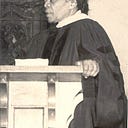History 101: The Stone Family
In this series, History 101, we’ll explore some of the topics and questions we frequently discuss at the Charlotte Hawkins Brown Museum.
Almost immediately after Dr. Charlotte Hawkins Brown founded Palmer Memorial Institute, she knew she would have to secure funding to expand the school’s infrastructure. Luckily, her relationship with Alice Freeman Palmer would once again prove useful. Alice Freeman Palmer and her husband, George, were well connected with many philanthropists in New England.
One of these philanthropists was Galen L. Stone. Stone and his family would end up becoming Palmer Memorial Institute’s greatest supporters. Stone was a Boston financier and philanthropist born in 1862. Stone largely used his wealth to support the arts and charity organizations. Proud that his wealth had been acquired through his own business efforts, he donated to Wellesley College, Harvard University, the Boston Symphony, Massachusetts General Hospital, as well as museums and cultural organizations.
Galen Stone became interested in donated to Palmer in 1913. Stone felt that African Americans should receive the best education possible, which was a rare line of thinking for many white philanthropists in the early 20th Century. Stone said “I am not interested in education and advancing Negroes, but in making American citizens.” He wanted to ensure the existence of a school where a liberal arts curriculum was taught and African American price and self-esteem was encouraged. Stone took a great personal interest in Dr. Charlotte Hawkins Brown, even funding a vacation for Dr. Brown to Colorado in 1918 after seeing the stress she had been under following a fire that destroyed the main industrial building the year prior. It was Galen Stone who stepped in to help fund constructions after Memorial Hall (the first school building) burned in 1922 and then Grew Hall, the girl’s dorm, burned in 1924. In 1925, Galen Stone offered $75,000 in matching funds towards PMI’s building fund.
Galen Stone died the following year in 1926. Upon his death, Dr. Charlotte Hawkins Brown vowed to name the new girl’s dormitory in his honor (Galen L. Stone Hall). In a speech she wrote about his death, Dr. Brown said “I feel as though I have come to your from the funeral of my own father, for he has been to me what my own father could not…so beautiful a friendship, so wonderful a man, so victorious a life!”
Robert Gregg Stone, Galen’s son, wrote to Dr. Brown shortly after his father’s death to assure her that he has settled the estate and Galen’s pledge of “$75,000 for the Foundation fund, $5,000 per year for five years for the Current Expense Fund” would continue. Robert, like his father, remained a loyal friend to Dr. Brown and Palmer Memorial Institute for many years.
The men of the Stone family were not the only people who would come to Palmer’s financial aid. Galen’s wife, Carrie, was an active member of the Massachusetts’s-based fundraising Sedalia Club. In 1922, Carrie paid off a $14,000 debt from construction on the Alice Freeman Palmer Building, allowing the building to open and be dedicated debt-free. Nearly 20 years later, she helped to create an endowment fund to secure stability for the school. Carrie Stone and Dr. Brown became close friends due to their shared religious faith and passion for civil rights. Upon Carrie’s death in 1945, she left $10,000 to Dr. Brown and Palmer. Dr. Brown used this money to build the Carrie M. Stone Teacher’s Cottage (now the Visitor Center). Even after the death’s of both of their parents, the Stone children continued the philanthropic efforts of their parents for Palmer.
